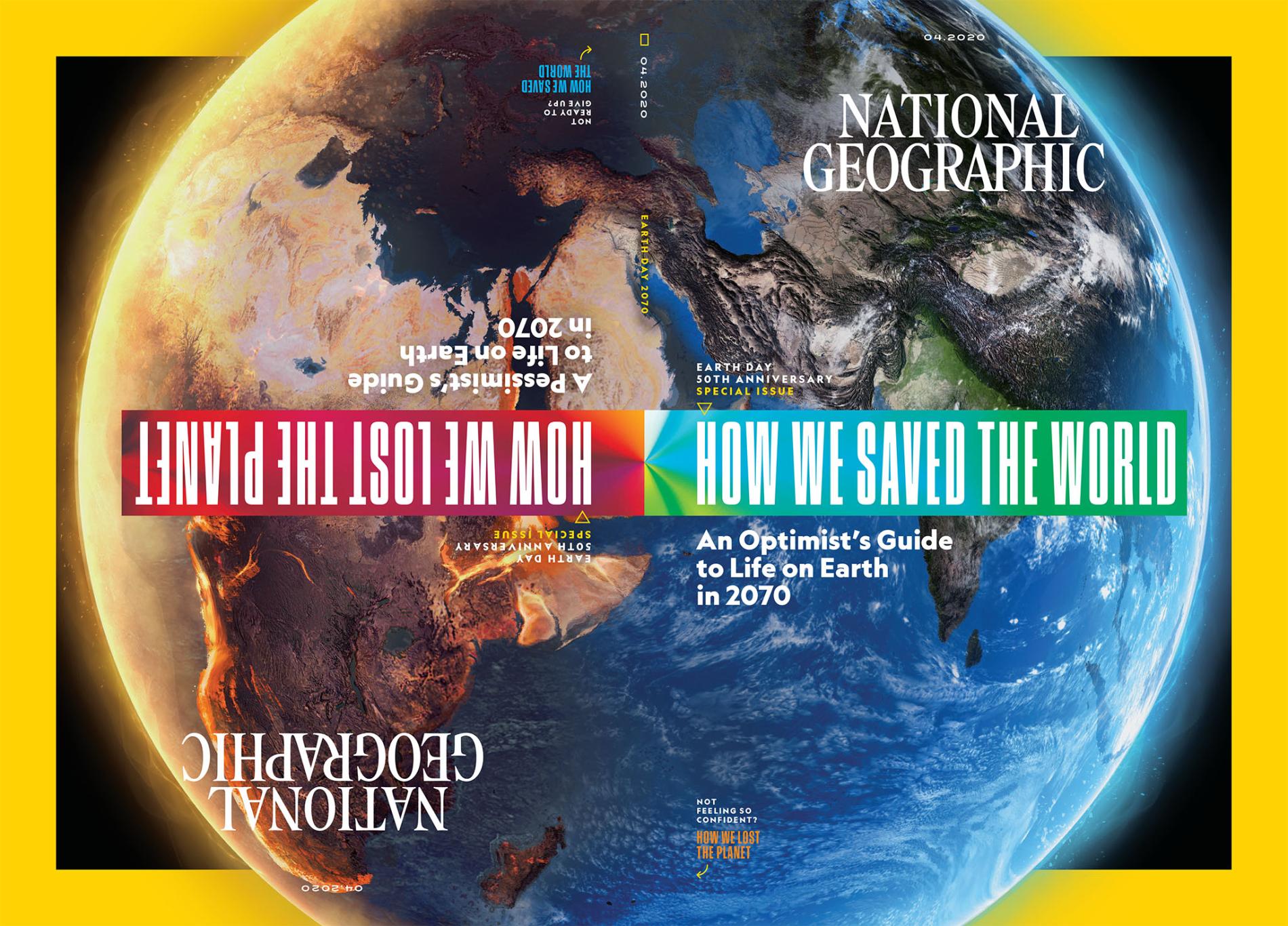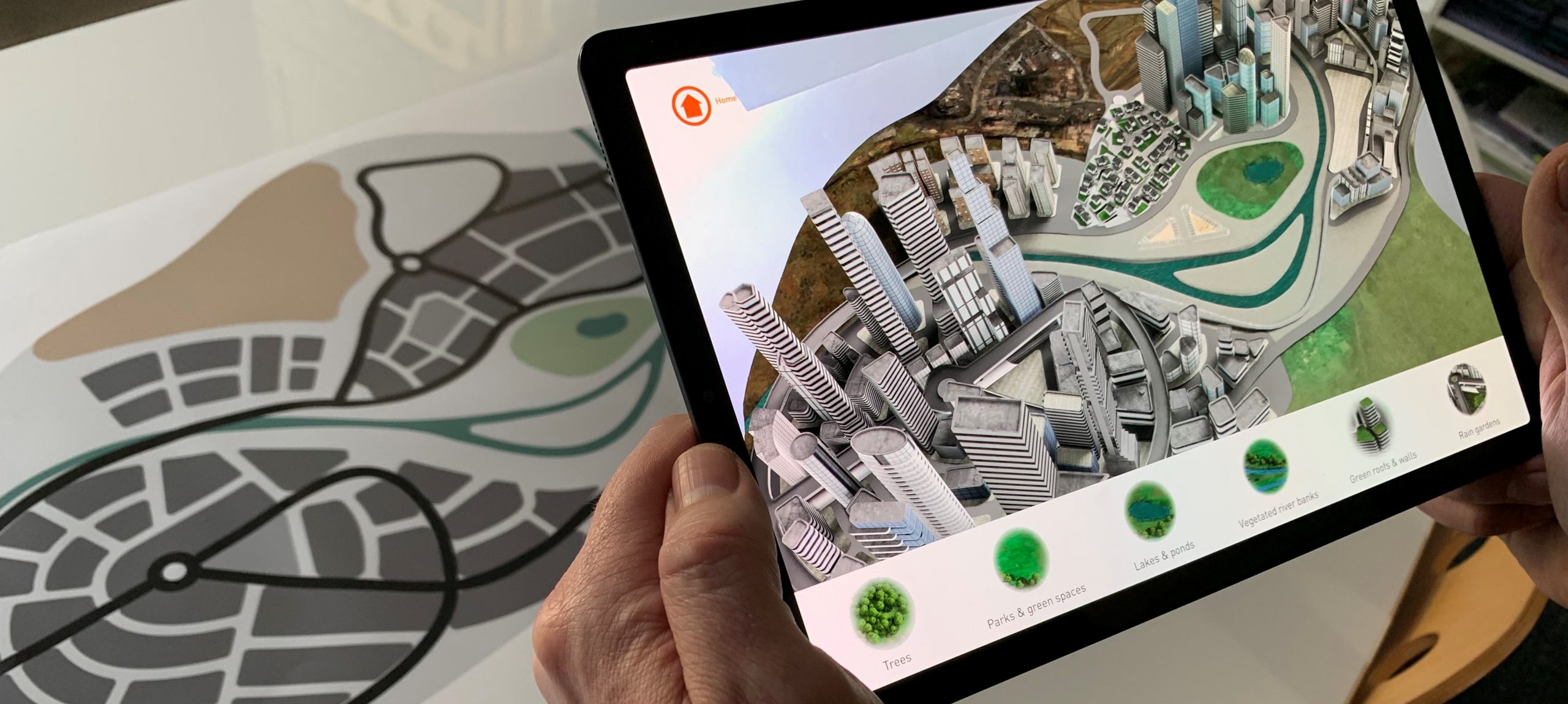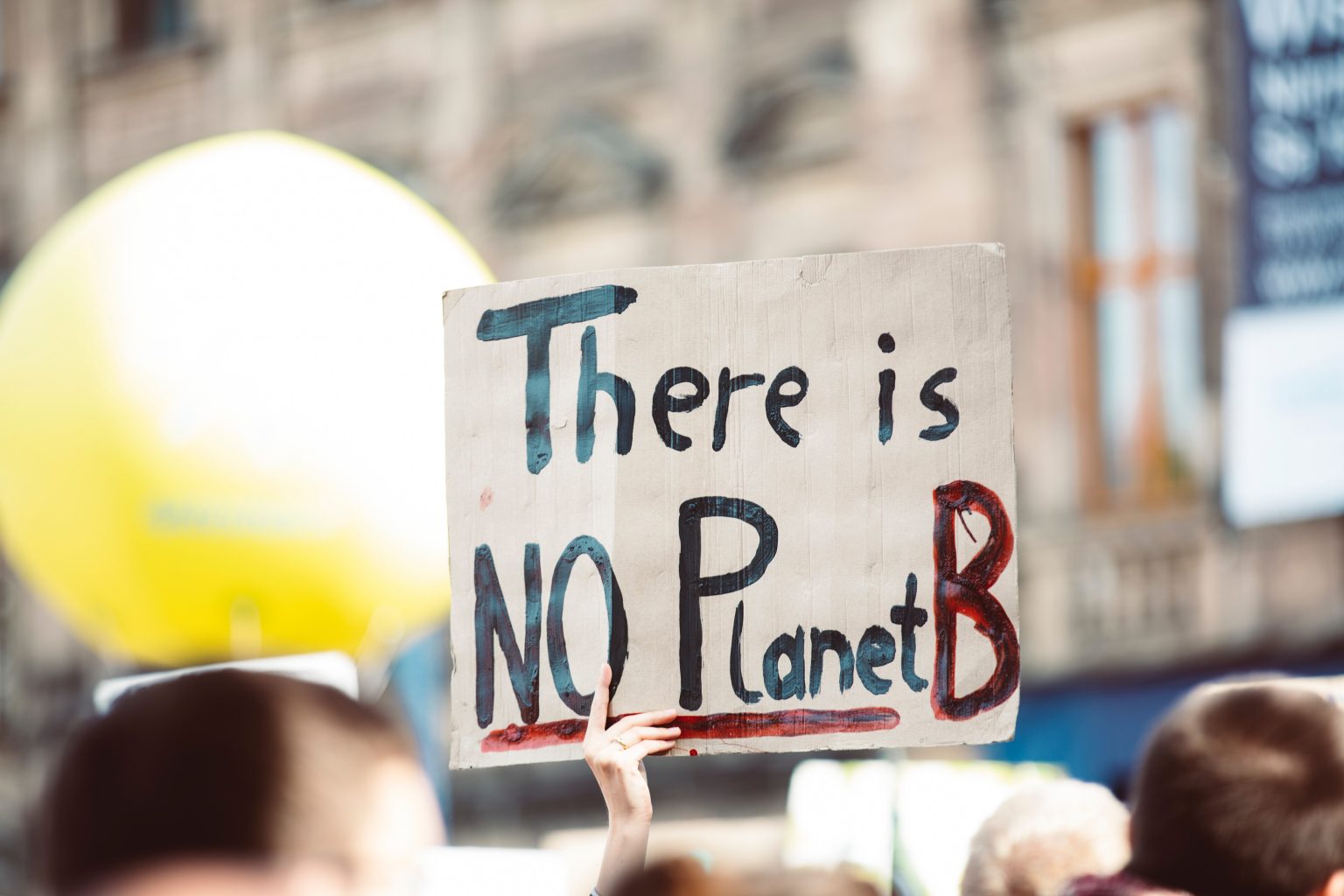What does climate change look like?
It’s a hard question to answer—not many of us have seen the effects for ourselves.
To help combat this, many organizations, charities, and schools are turning to immersive media—virtual reality, augmented reality, mixed reality—to bring the effects of climate change closer to home and ultimately inspire action.
National Geographic
This month marks the 50th anniversary of Earth Day, an annual global event held on April 22 to demonstrate support for environmental protection. For the occasion, National Geographic has launched its first augmented reality-enabled cover tied to the event.
The interactive tool, which was built using Instagram’s Spark AR, enables users to see the globe as a 3D model with projected climate data from 2070 in 12 key cities. Cities are also connected via a line if they are projected to have the same climate in 50 years. For example, in 2070, LA will feel more like Ouezzane Province in Morocco. Hanoi, the capital of Vietnam, is not connected with any other city, because “by 2070, Hanoi will feel like no where else on earth does today”.
A physical magazine cover is not needed to access the AR experience so it is open to everybody.

Earthwatch Europe
A new augmented reality experience initiated by environmental charity Earthwatch Europe allows users to tackle the challenge of protecting a city from the effects of the climate crisis—flooding and heatwaves—using natural resources such as trees, lakes and green roofs.
Maria Pontes, director of programmes and partnerships at Earthwatch Europe, told RIBAJ: “There’s still very little general understanding of the power of these types of solutions in urban environments, including what they are, how they work and why they’re important. As an environmental education organization, we needed to do something about it and AR is an innovative, fun and engaging way to communicate with people.”
Developed in collaboration with Atticus Digital, the tablet-based experience builds on Earthwatch’s scientific research into nature-based solutions in 17 major cities across nine countries.

Virtual Planet
Virtual Planet is helping to combat climate change by getting people to experience it. Juliano Calil, the co-founder of Virtual Planet and a climate researcher at the Middlebury Institute of International Studies, is immersing communities in the environmental consequences of climate change.
Using drone photography, Calil and his team take thousands of photos of any given territory, environment or property, and from there they create 3D models. The effects of climate change—for example, rising sea level—are then applied. These images are then presented to local residents in virtual reality.
Future versions of the simulations, Calil says, will also integrate proposed solutions. If a community is considering building a sea wall, for example, “we can show the sea wall and look at the impacts to the beach,” he says. “You have a sea wall, but over time, you may lose the beach.”
Be Earth #13
Earlier this year at the World Economic Forum (WEF) annual meeting in Switzerland, a new VR experience titled Be Earth #13 was unveiled to teach users more about climate change. The free experience is a collaboration between Oculus, the United Nations, XR Impact and the Swedish International Development Agency (Sida).
Be Earth #13 takes the user to the Amazon rainforest in the aftermath of wildfires. The experience invites participants to embody earth and learn more about climate change, to take action and personal responsibility to help end global warming.
The title of the experience refers to the 17 UN Sustainable Development Goals, the 13th of which refers to “Climate Action”. The end objective is a virtual reality platform with experiences for each of the 17 UN goals.
The experience was available for demonstration at the WEF conference from 21st-24th January 2020, and will eventually be released to the public.
Xennial Digital
Xennial Digital is an extended reality (XR) company that creates meaningful digital experiences for K12 (for kindergarten to 12th grade) students. It is the recipient of Magic Leap’s Independent Creator Grant and creator of the Climate Change app available on Magic Leap World.
The company wants to arm students with knowledge so they can become agents of change. But, importantly, make the experience of gaining knowledge enjoyable and memorable.
The app explores different predictions of climate change over the next 100 years—from optimistic to nightmare—across five key data points: ice fraction, precipitation, air temperature, ocean temperature, and sea-level rise.
Xennial worked closely with the University of Miami Division of Meteorology & Physical Oceanography, which provided the data sets (which span 100 years) and validated the models as the team built the application.




